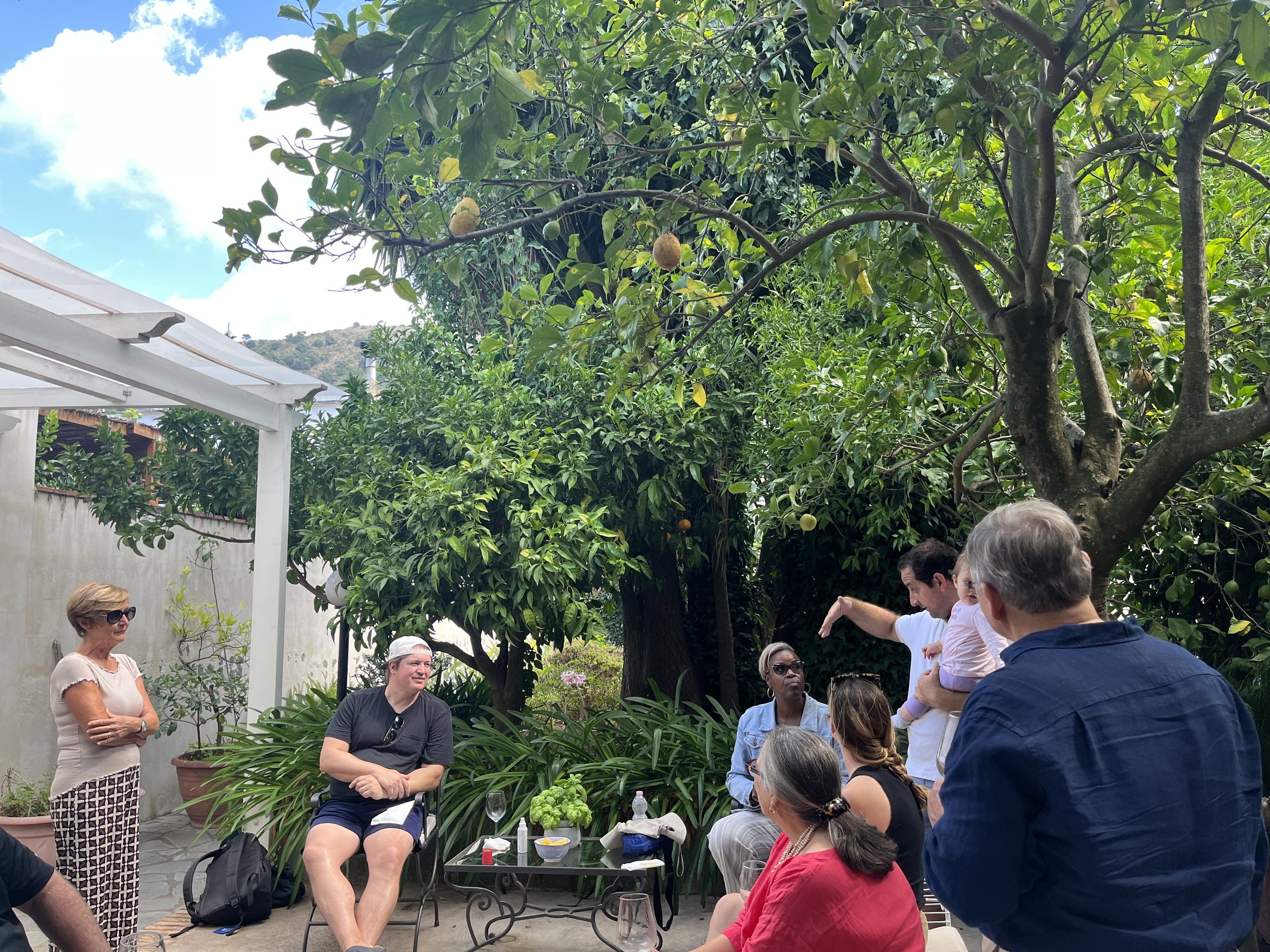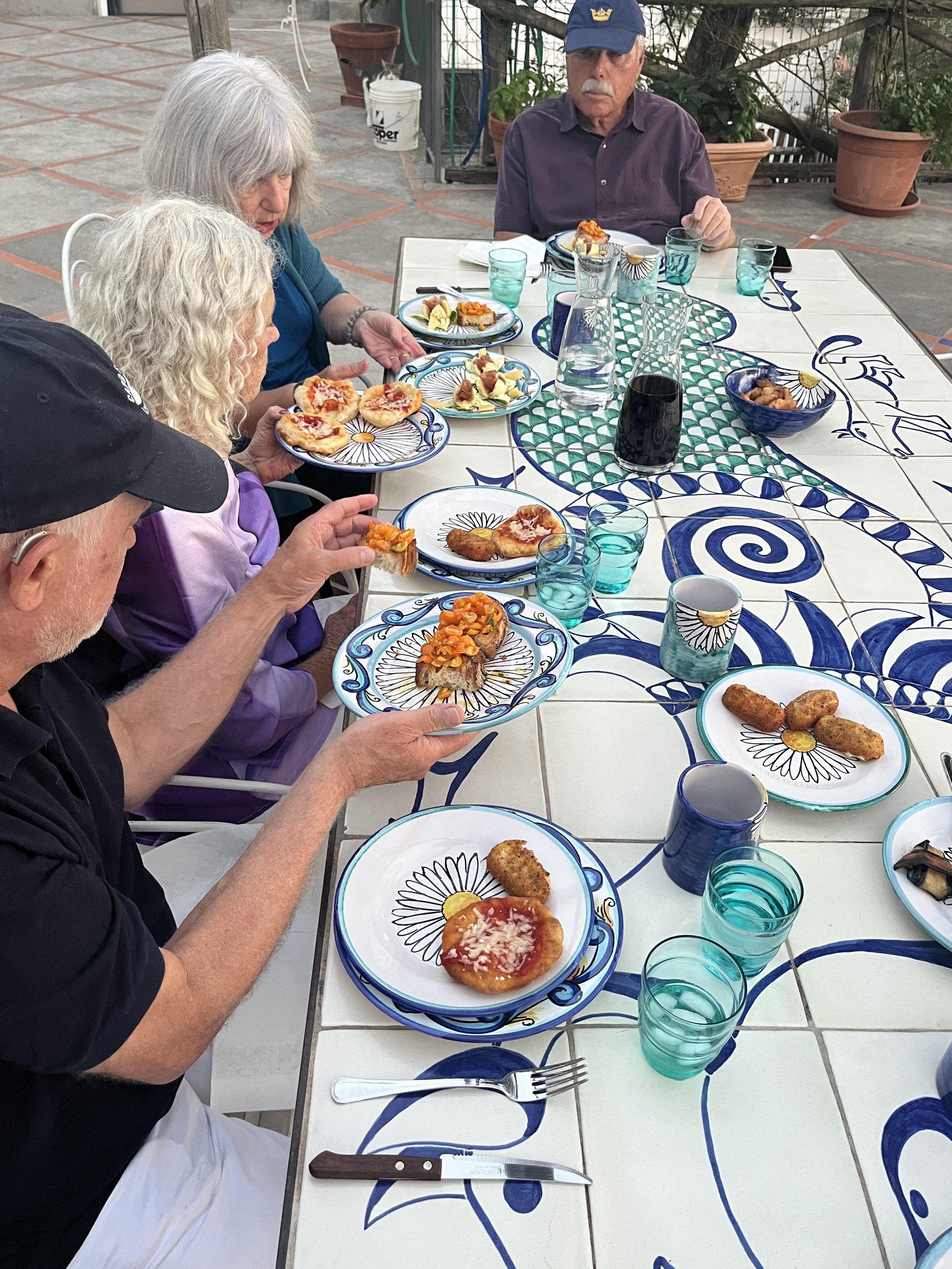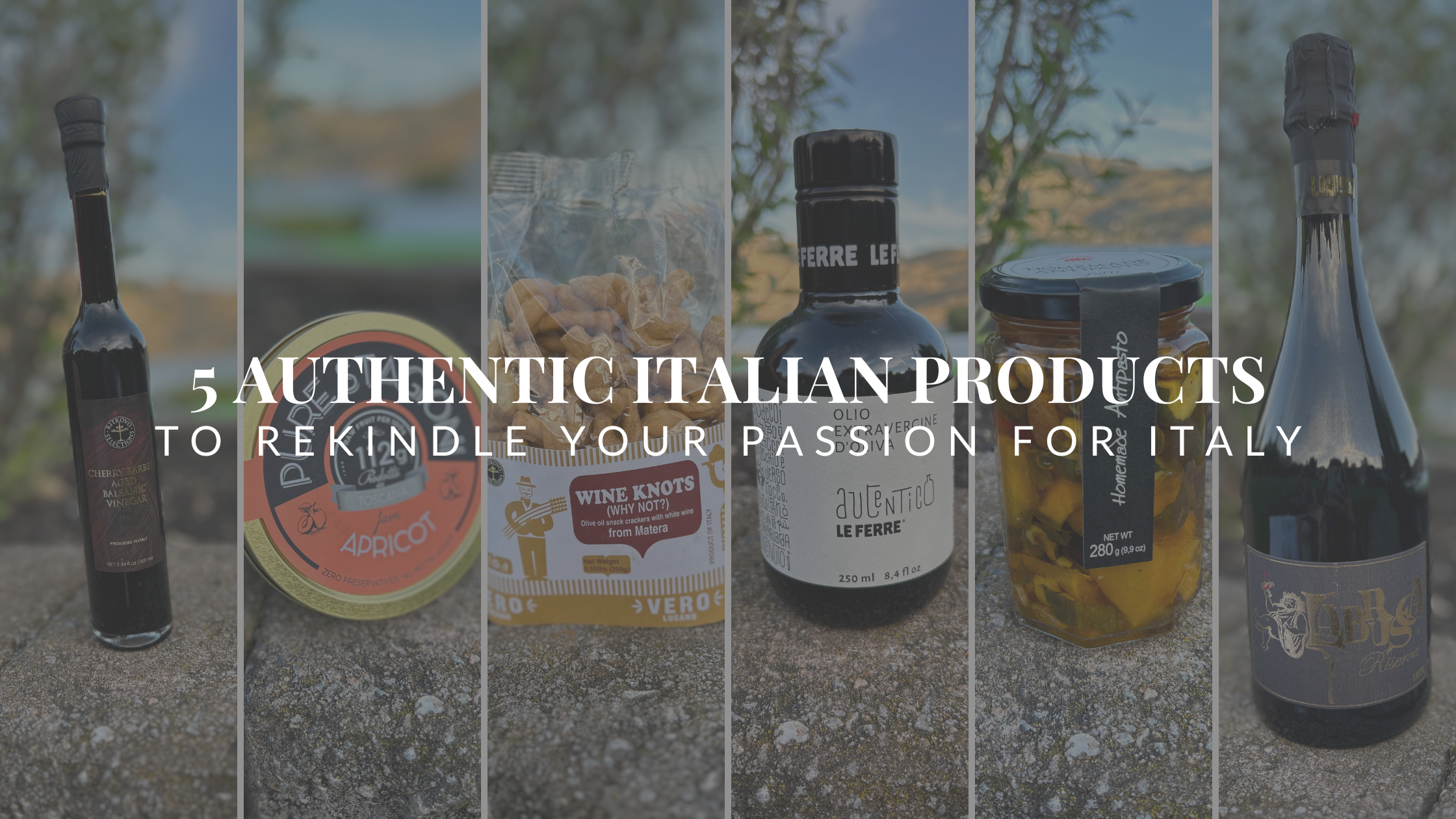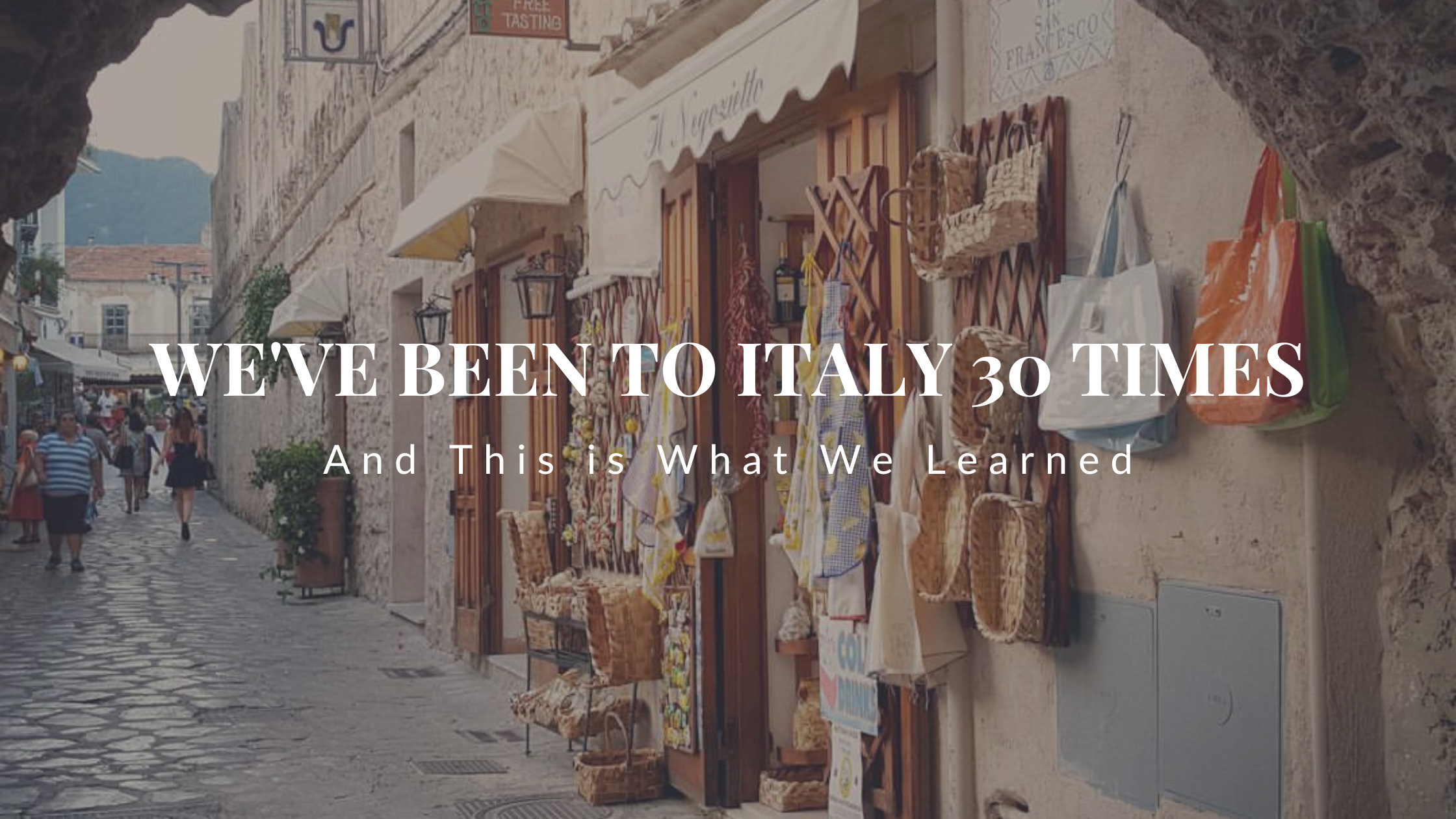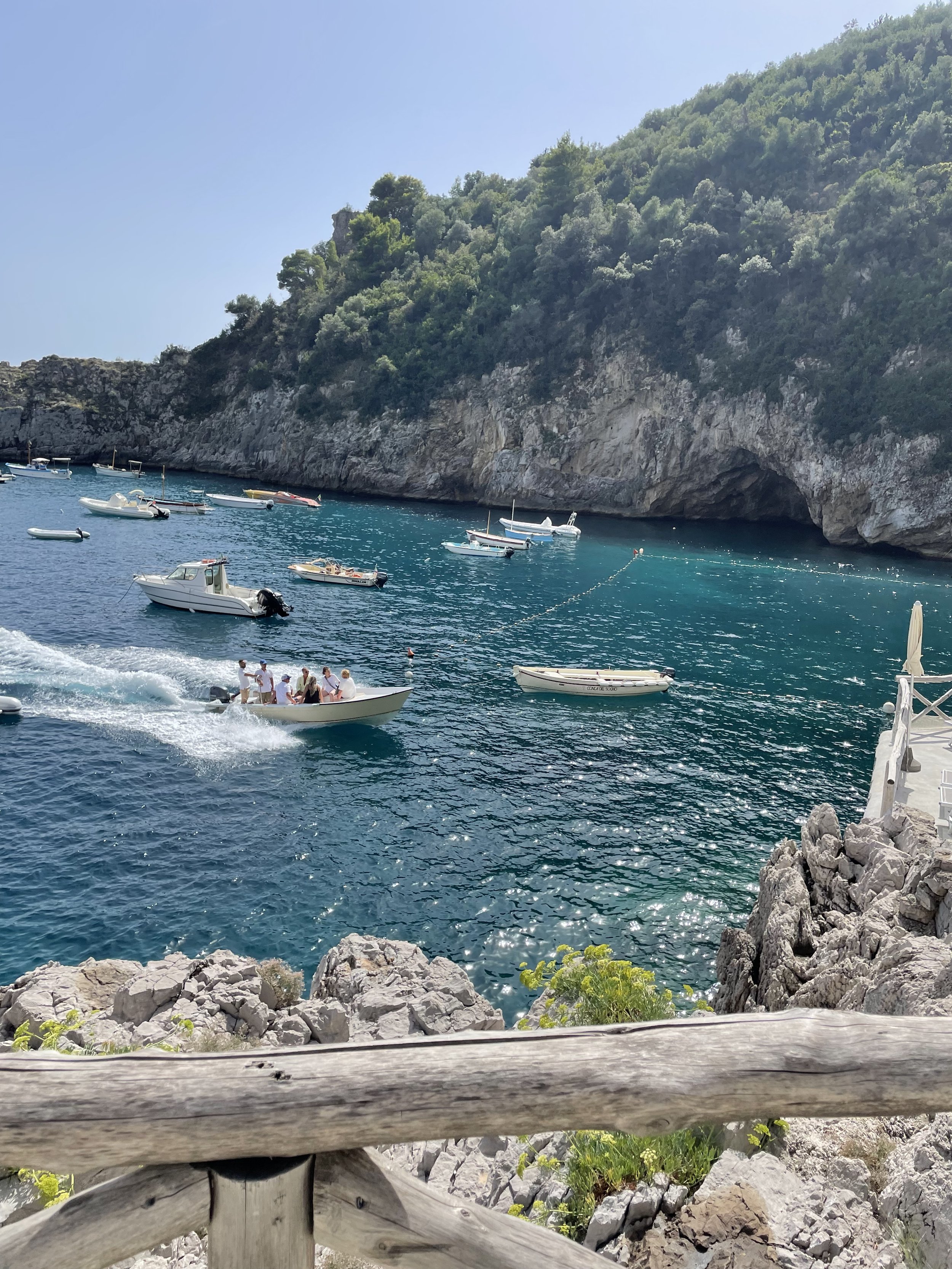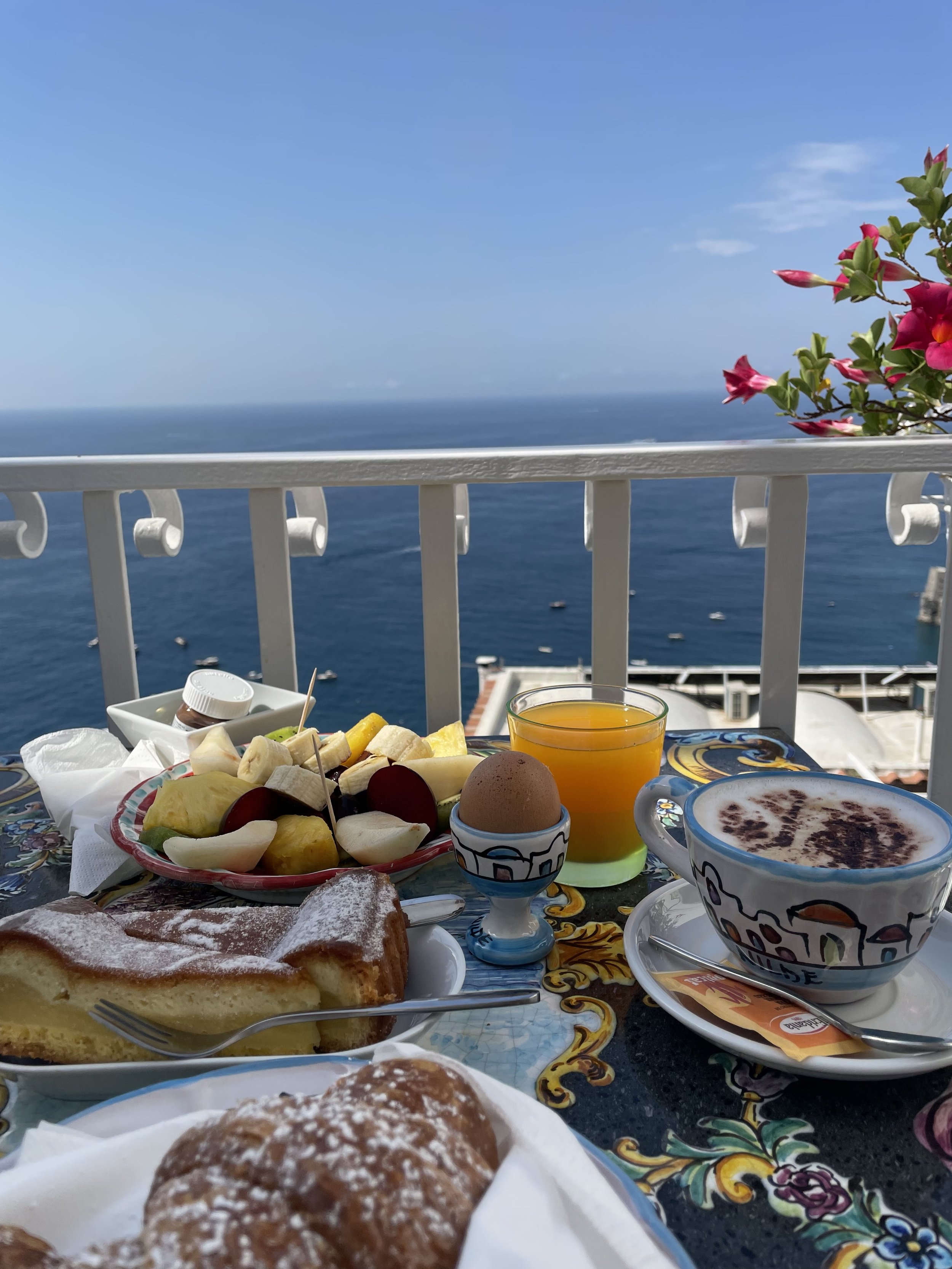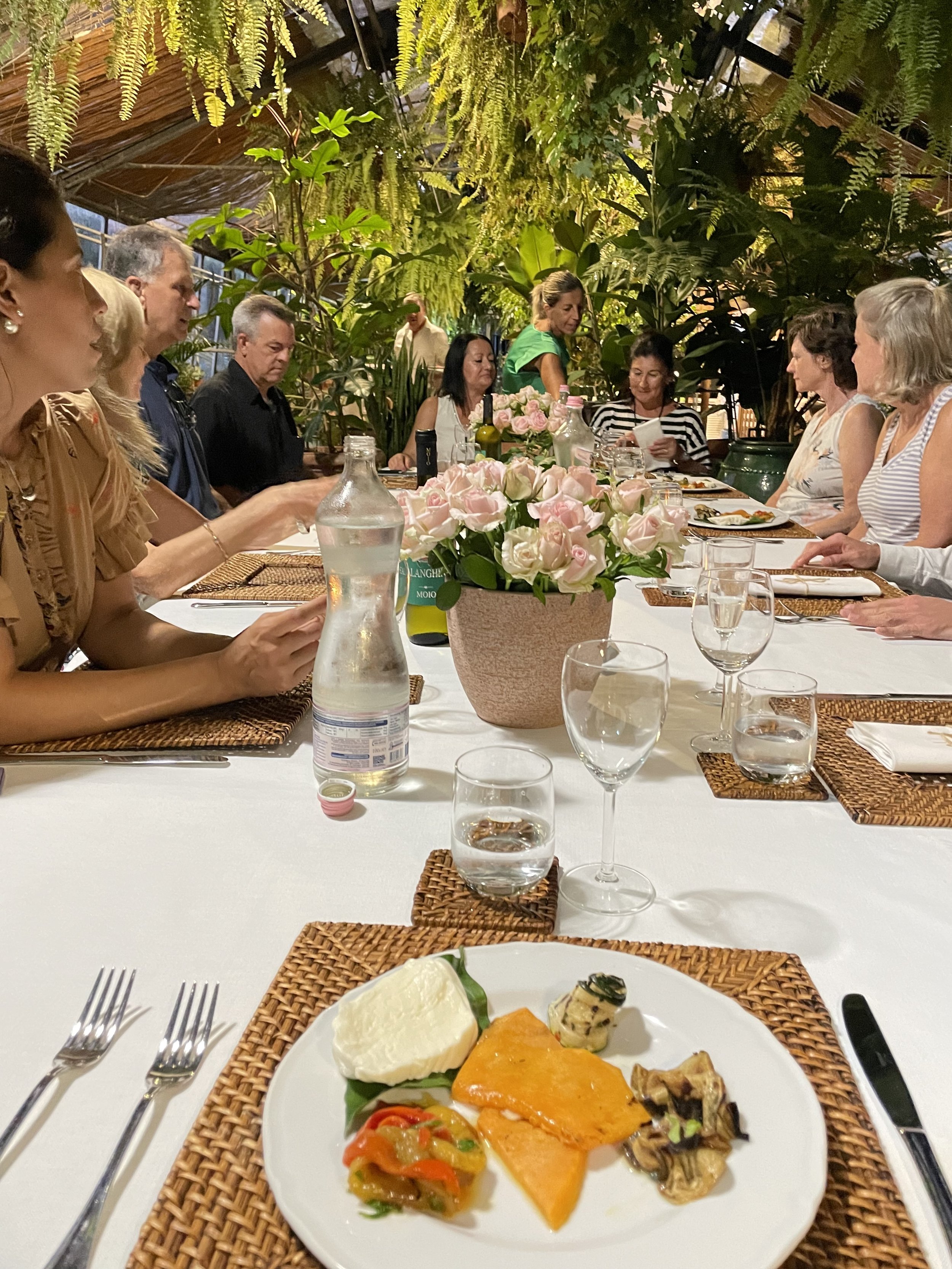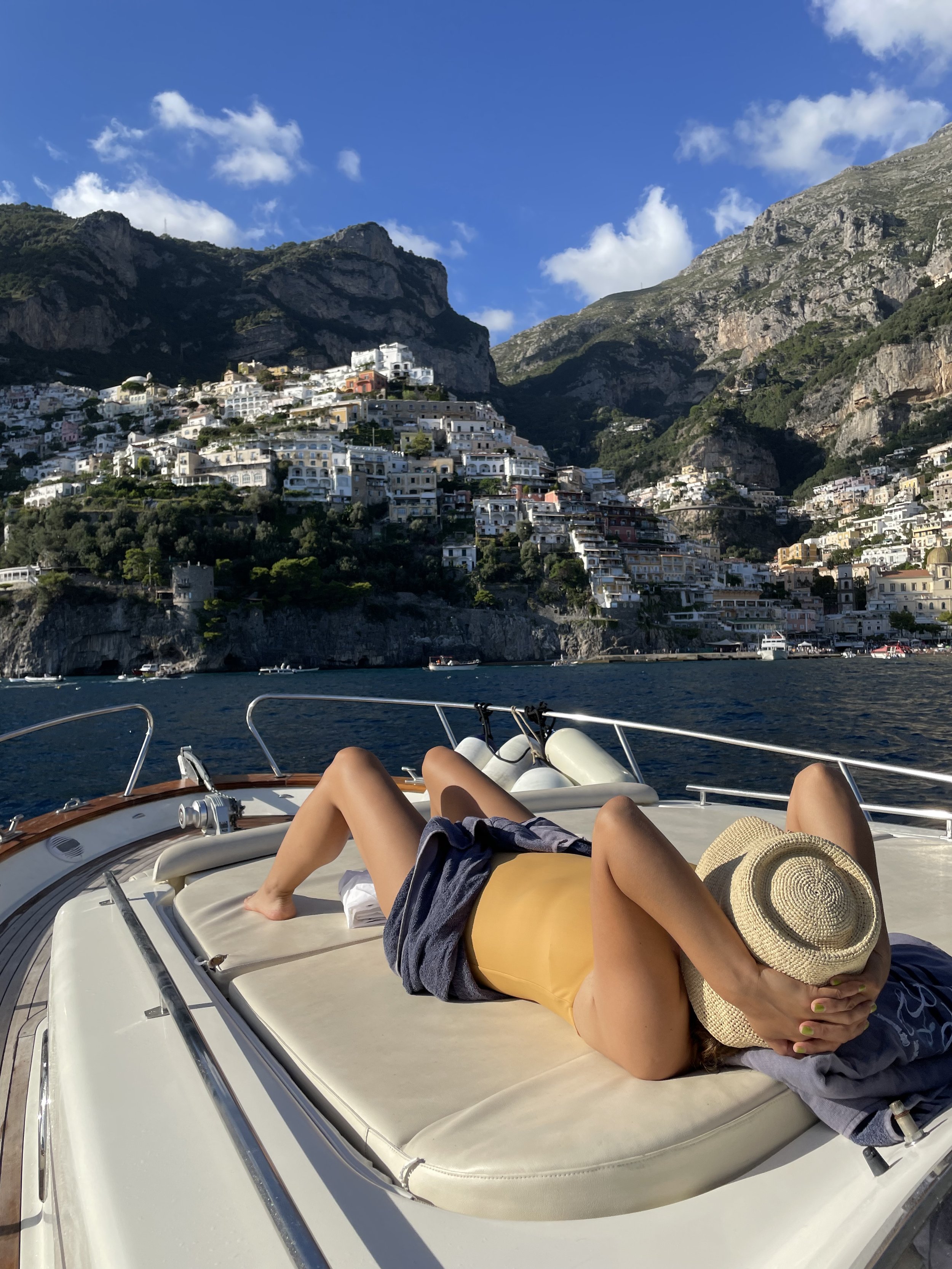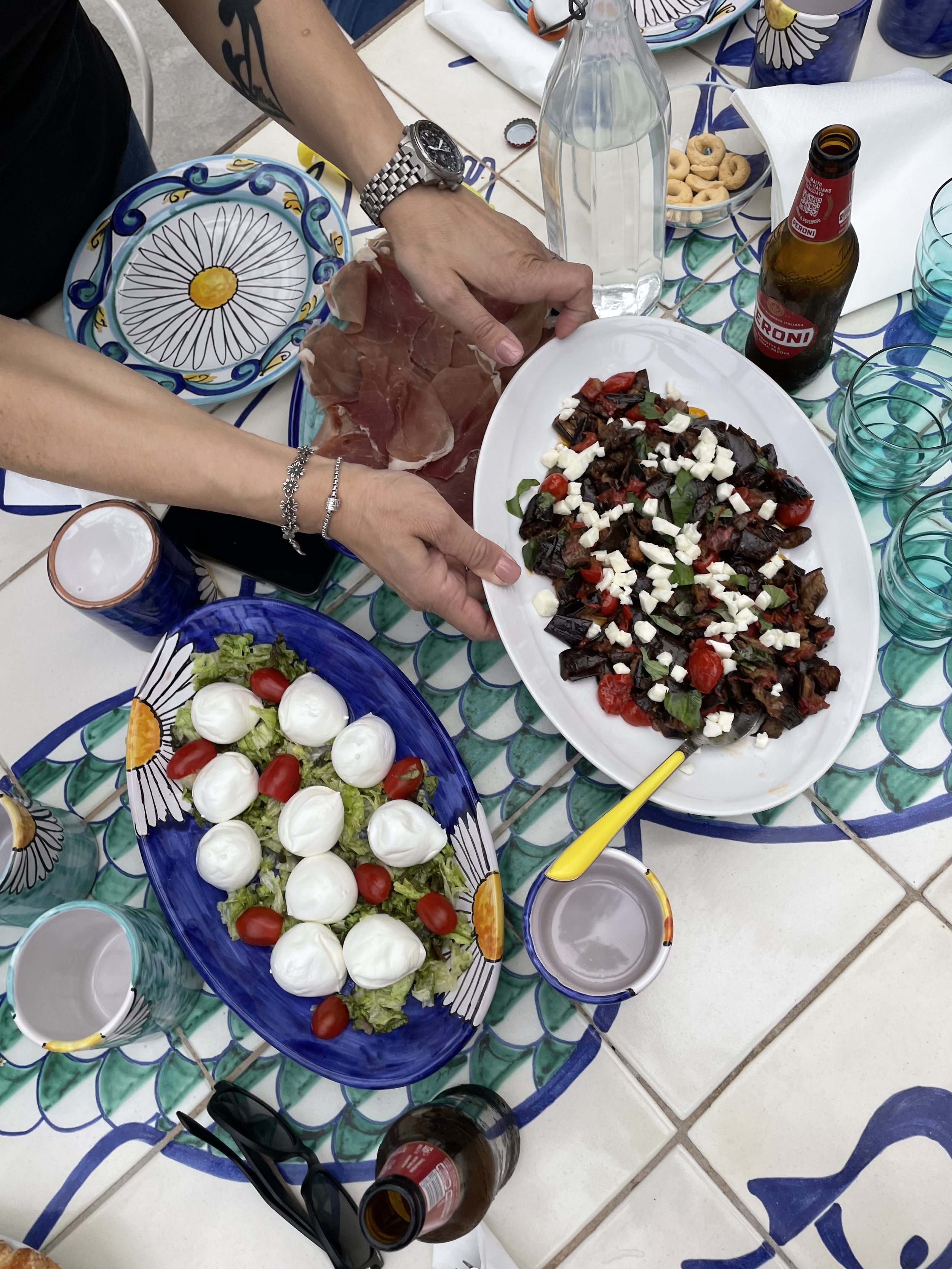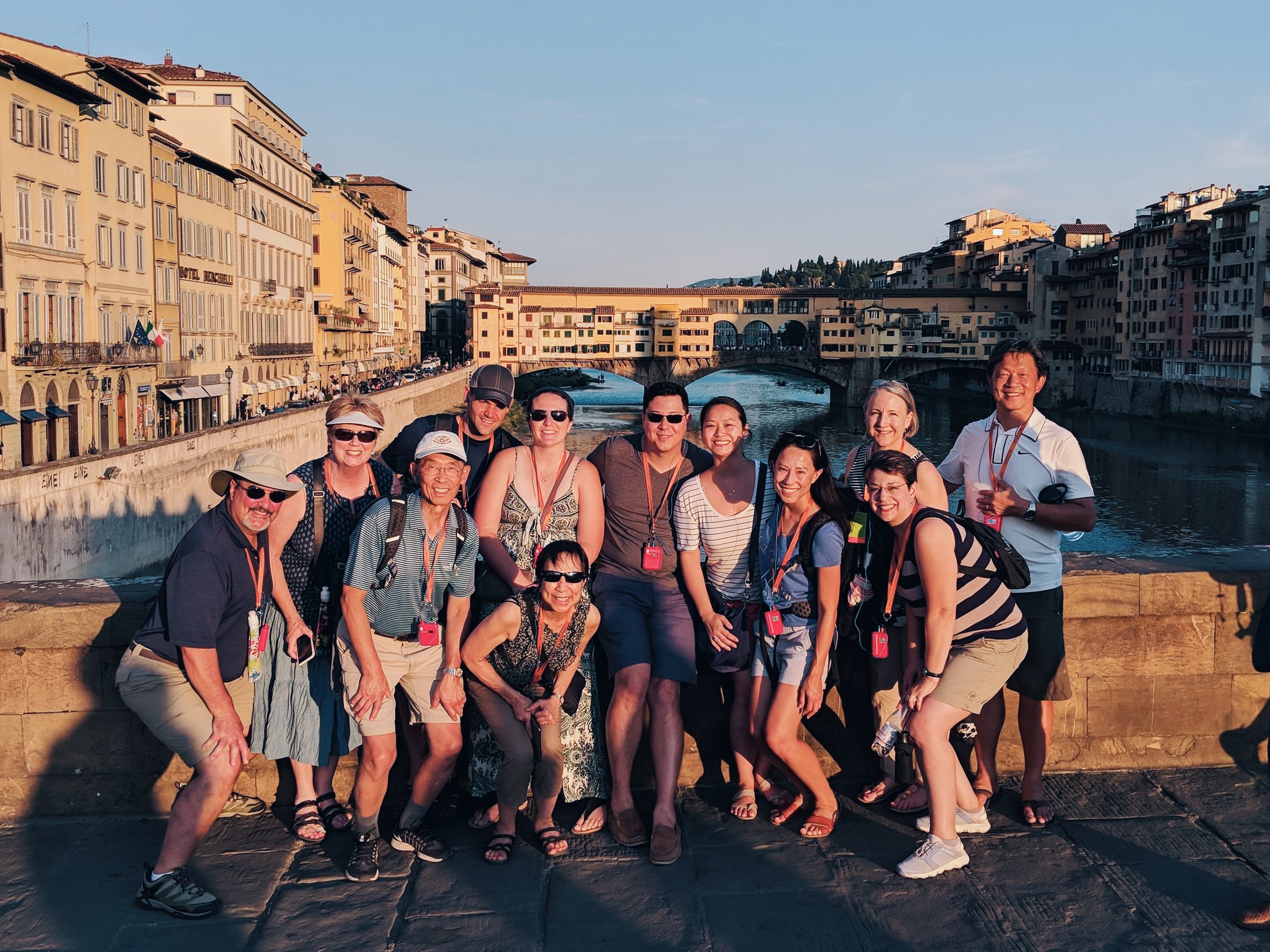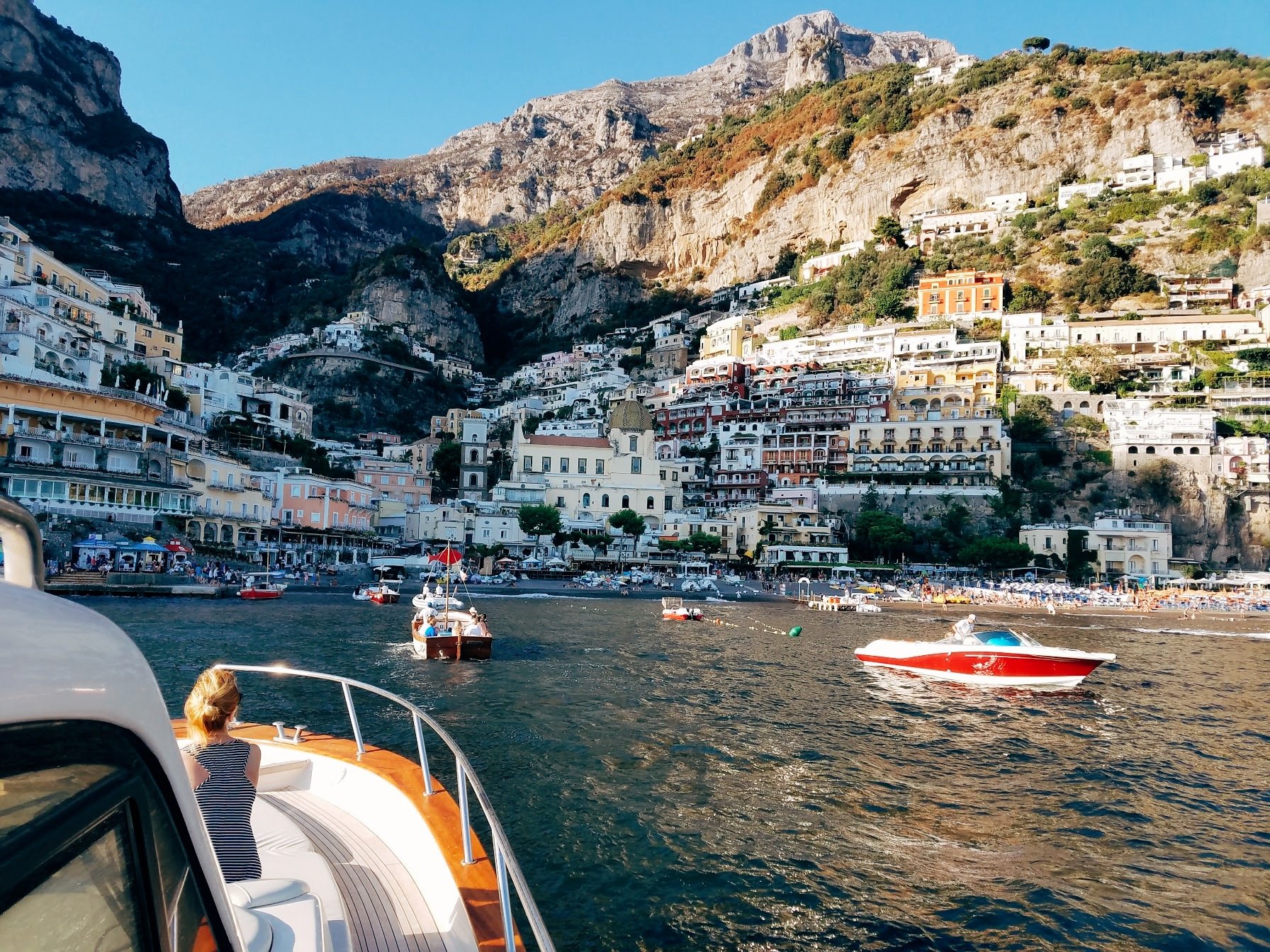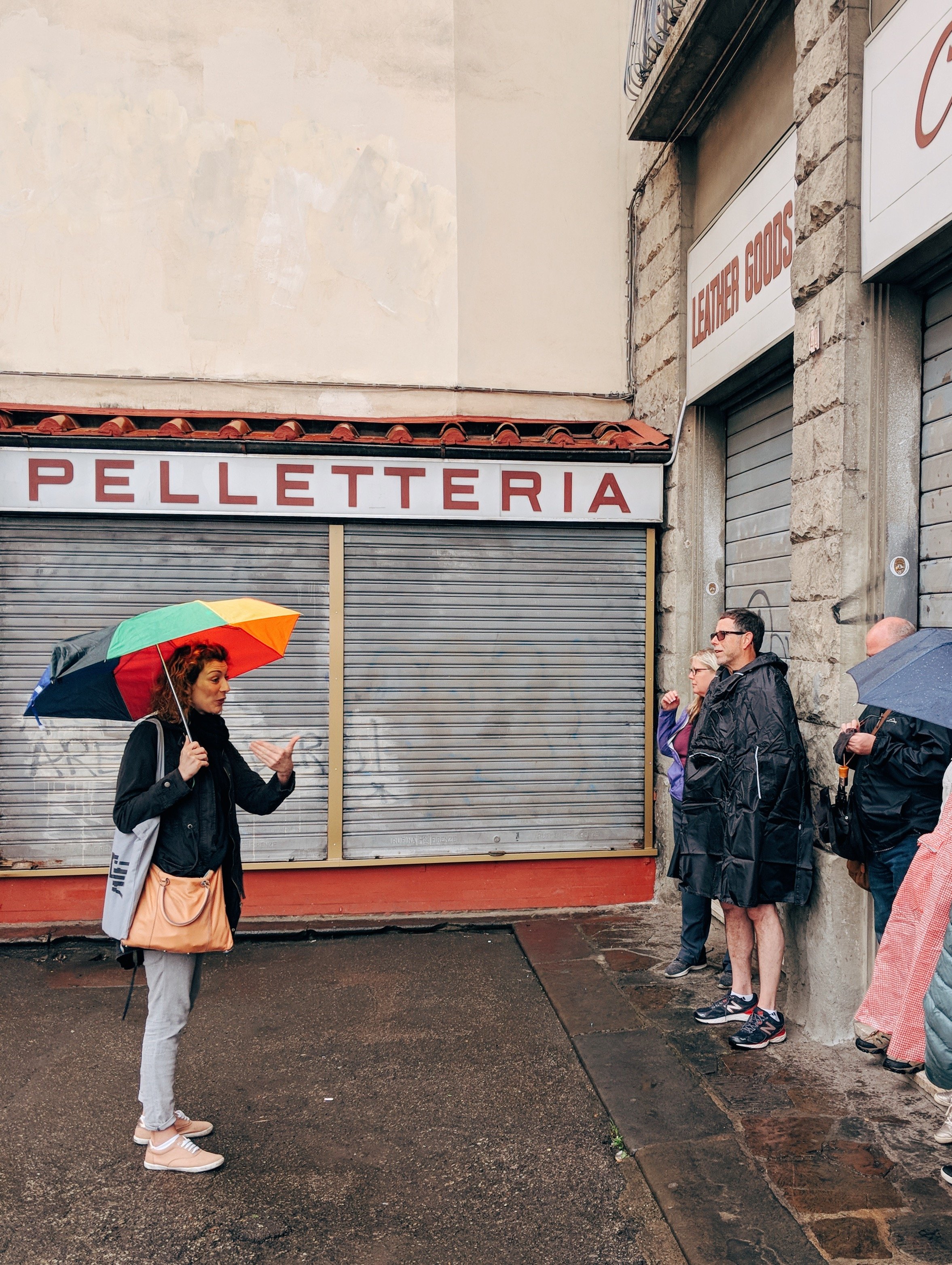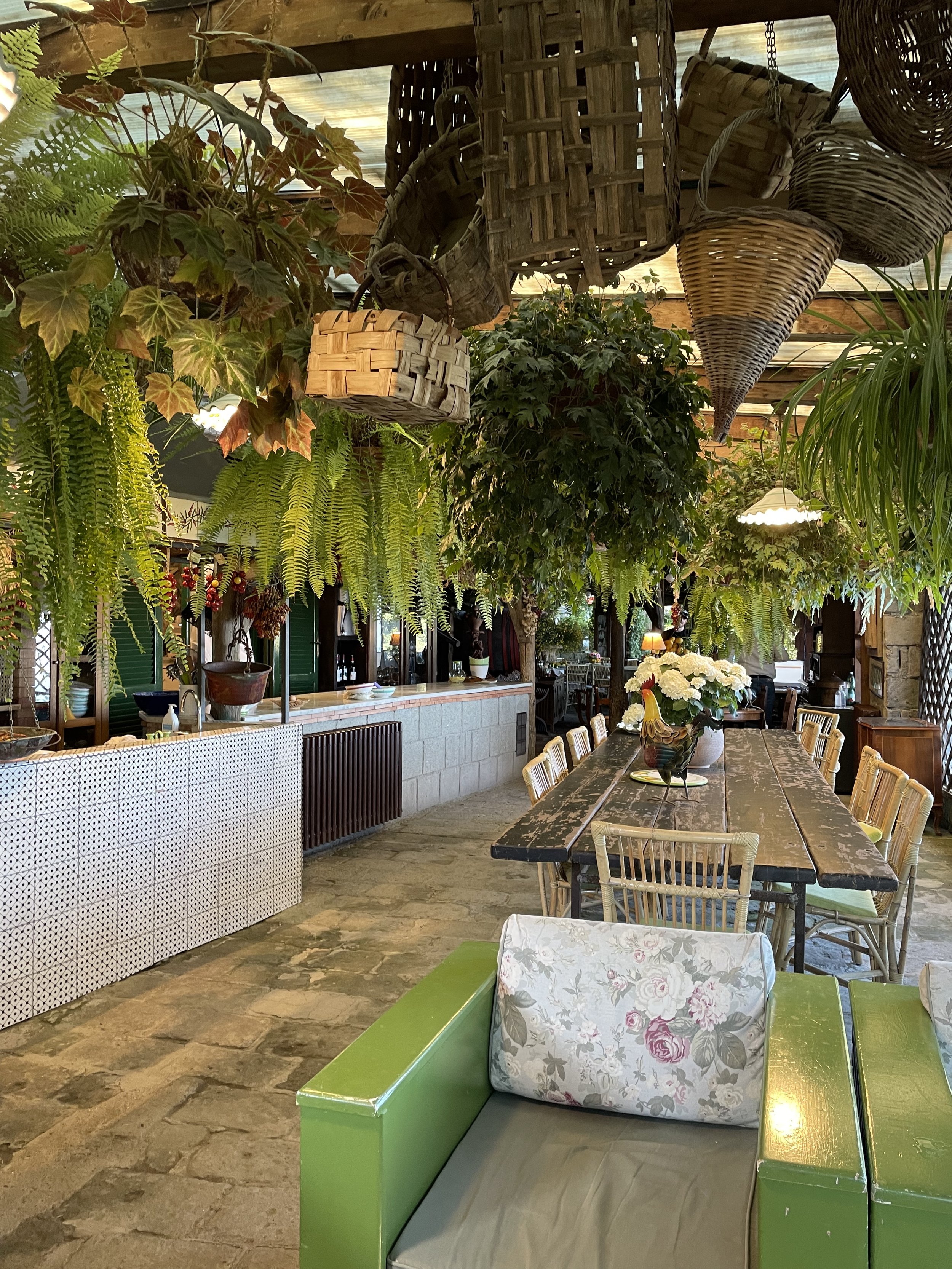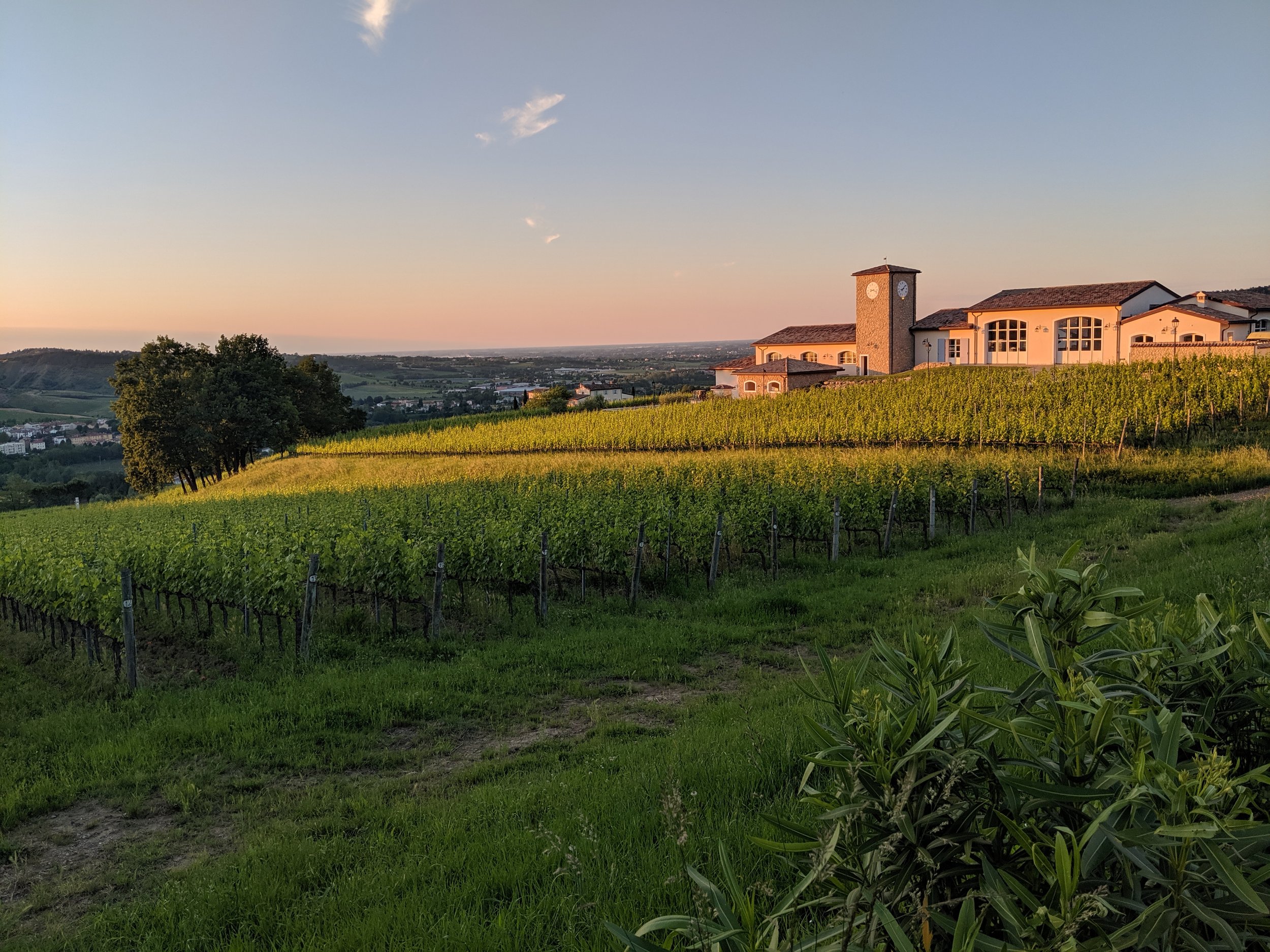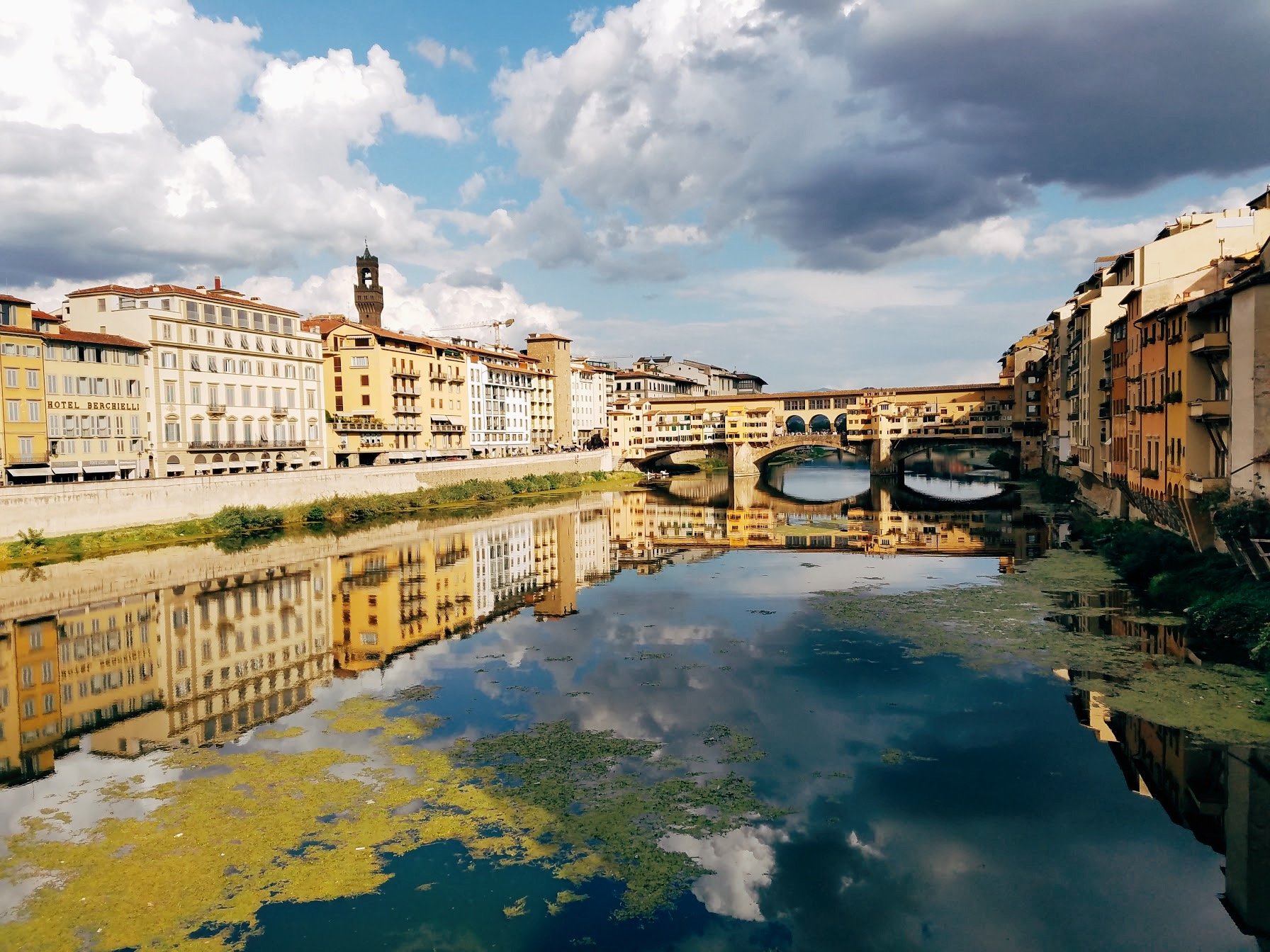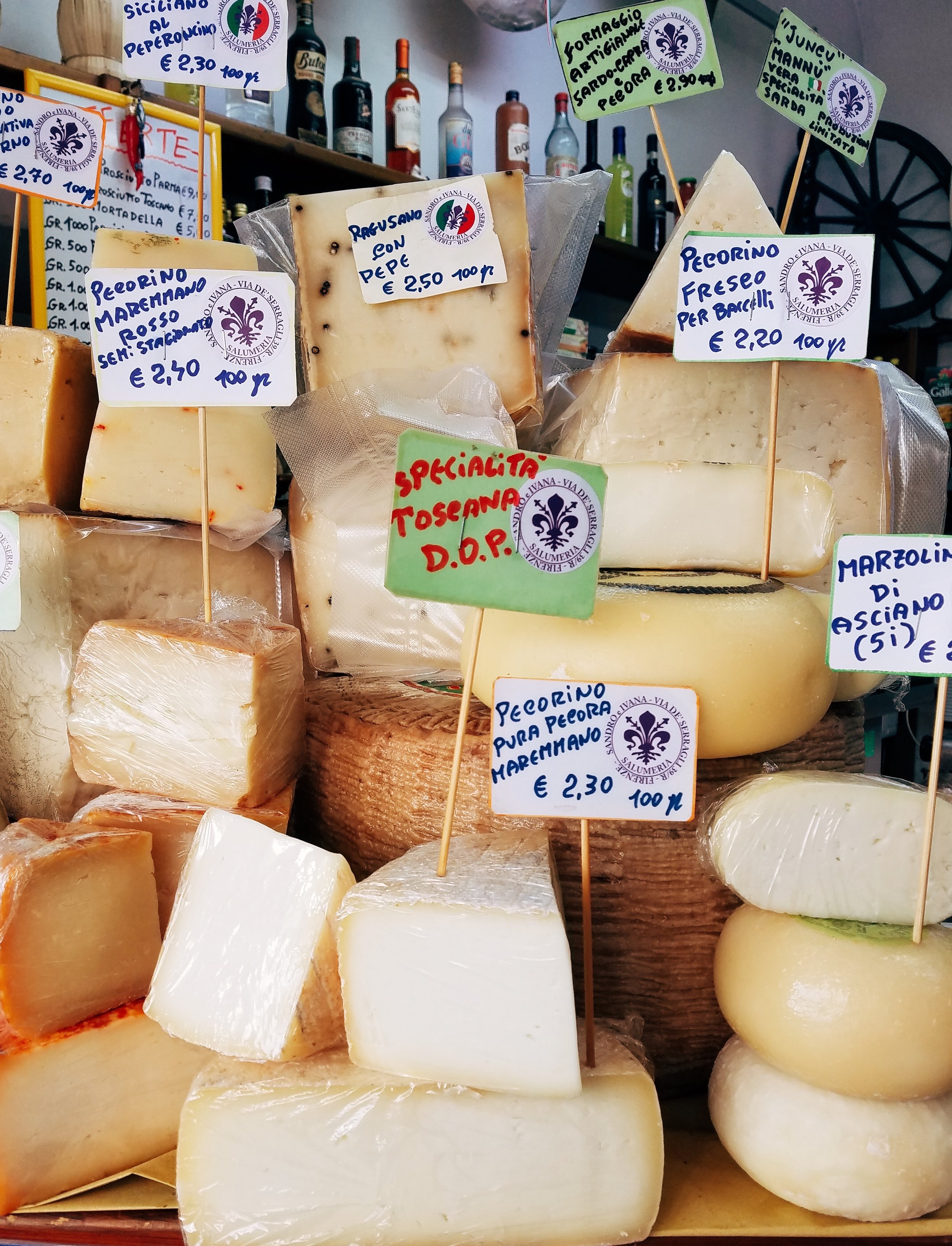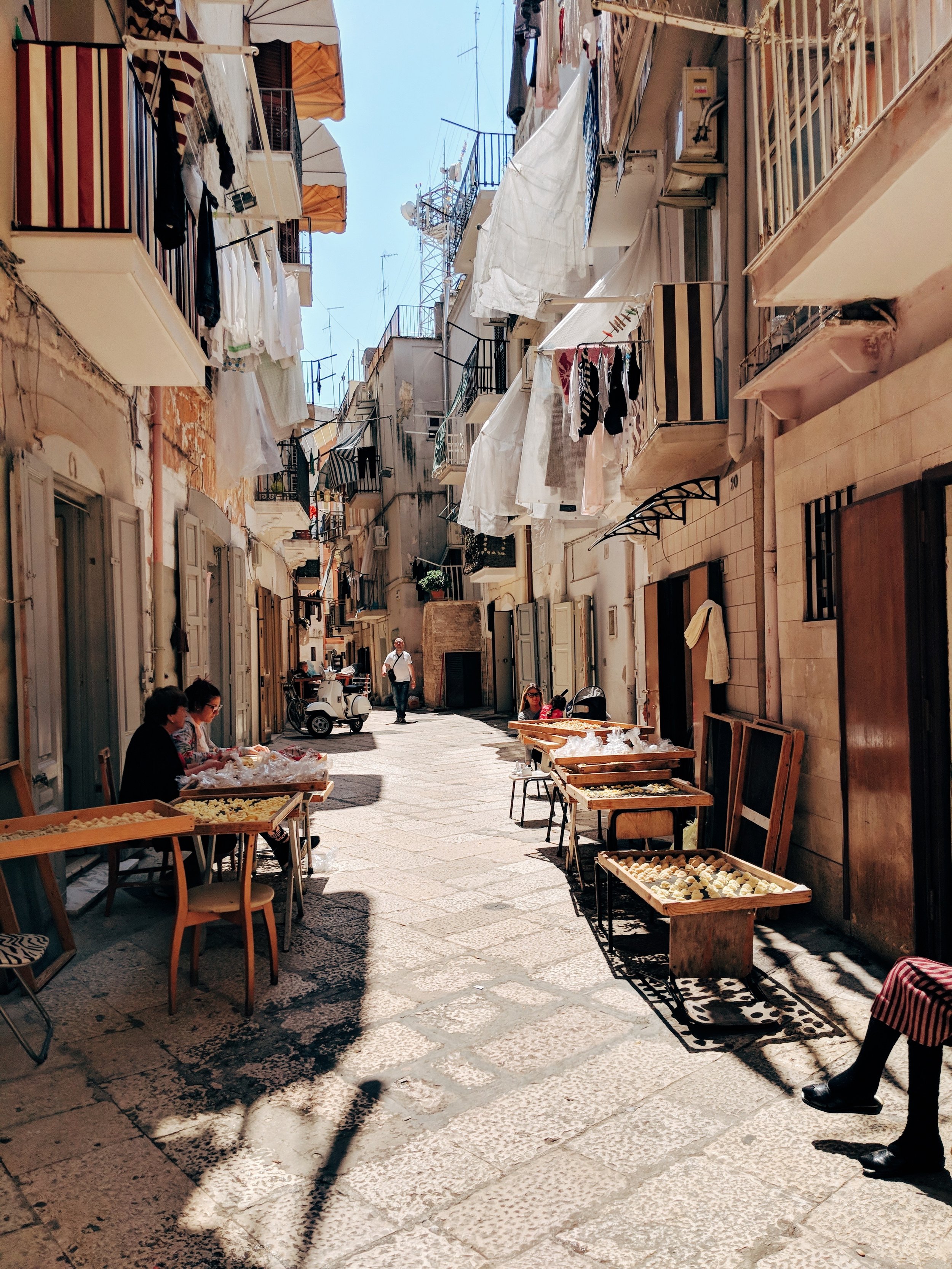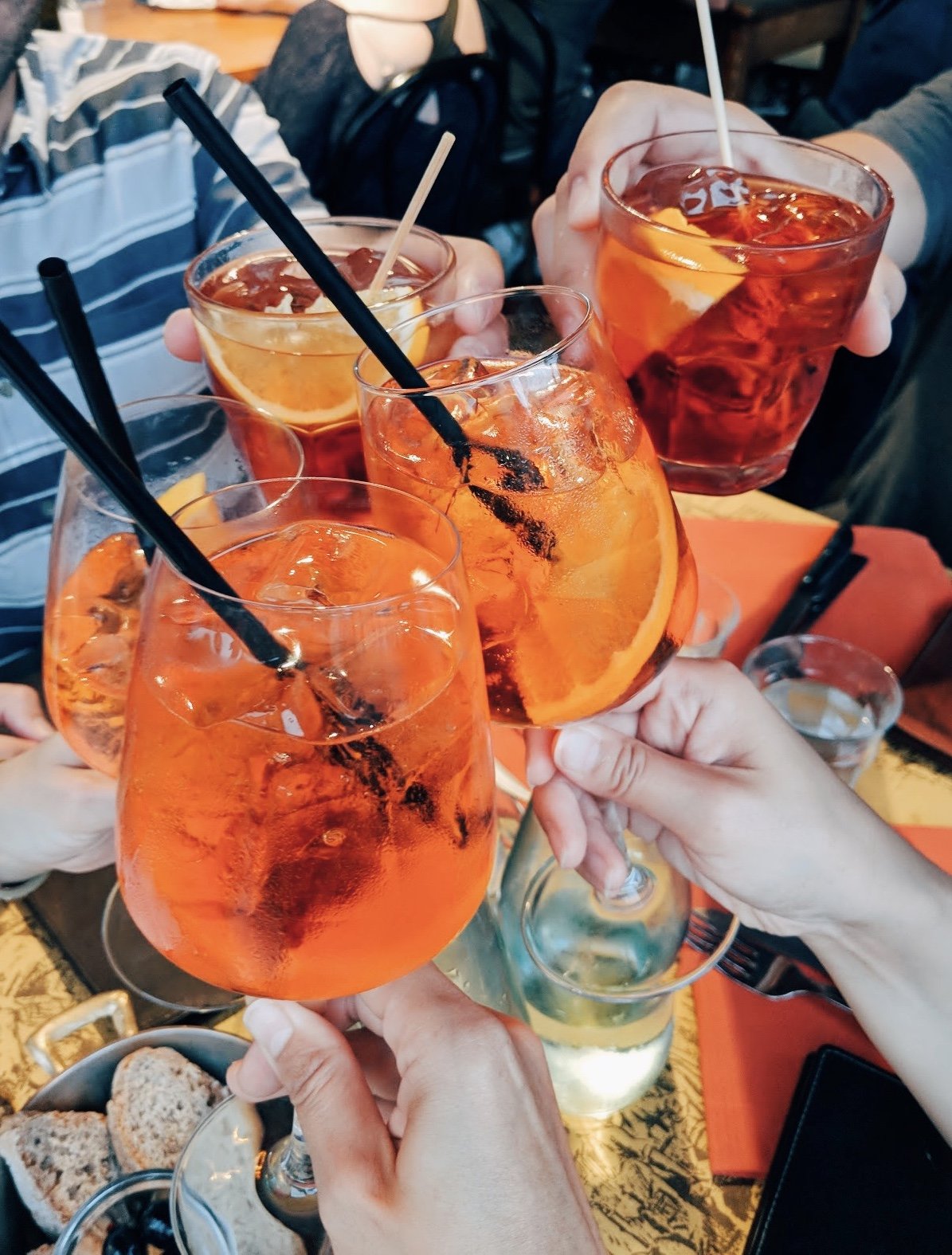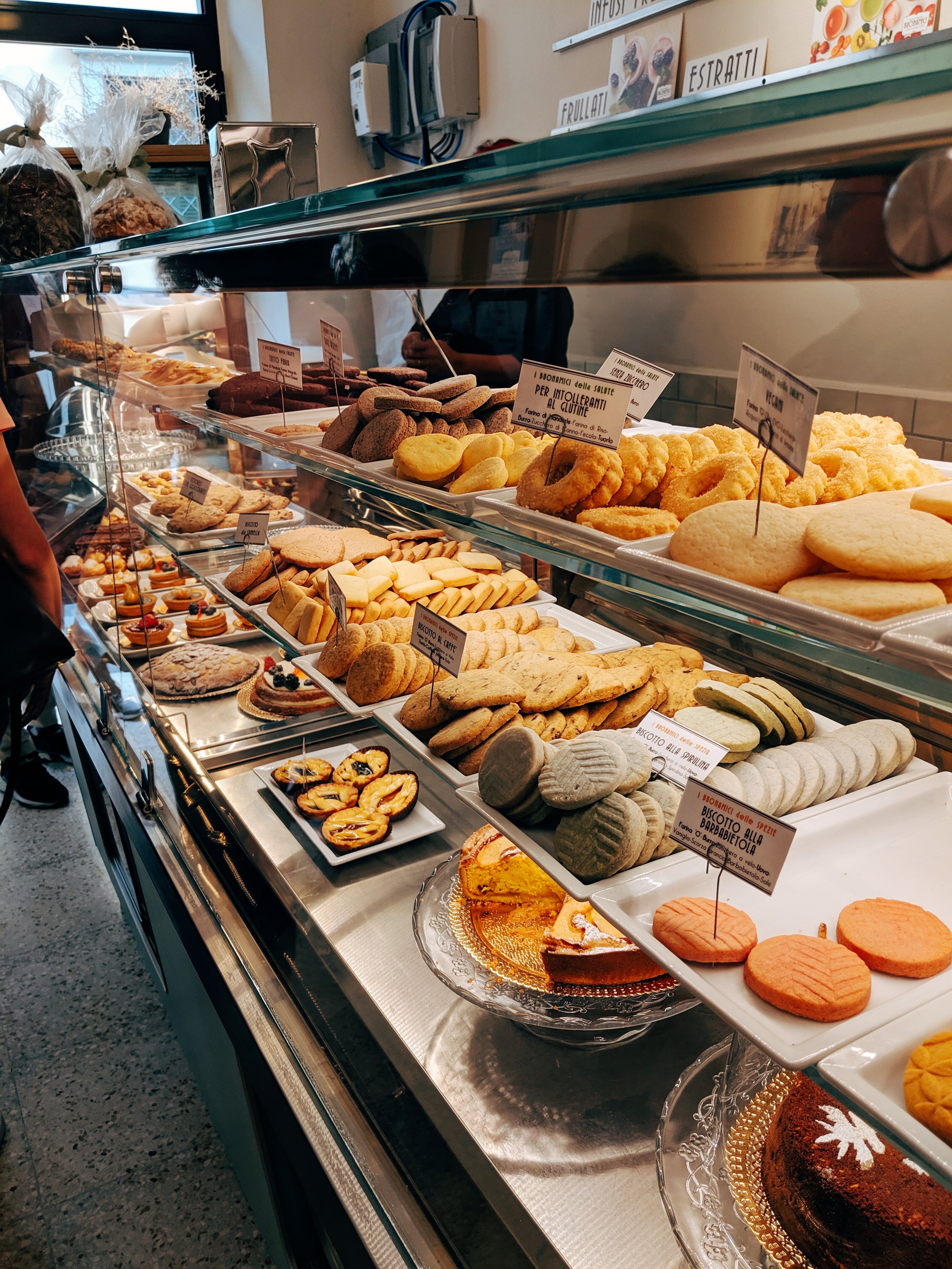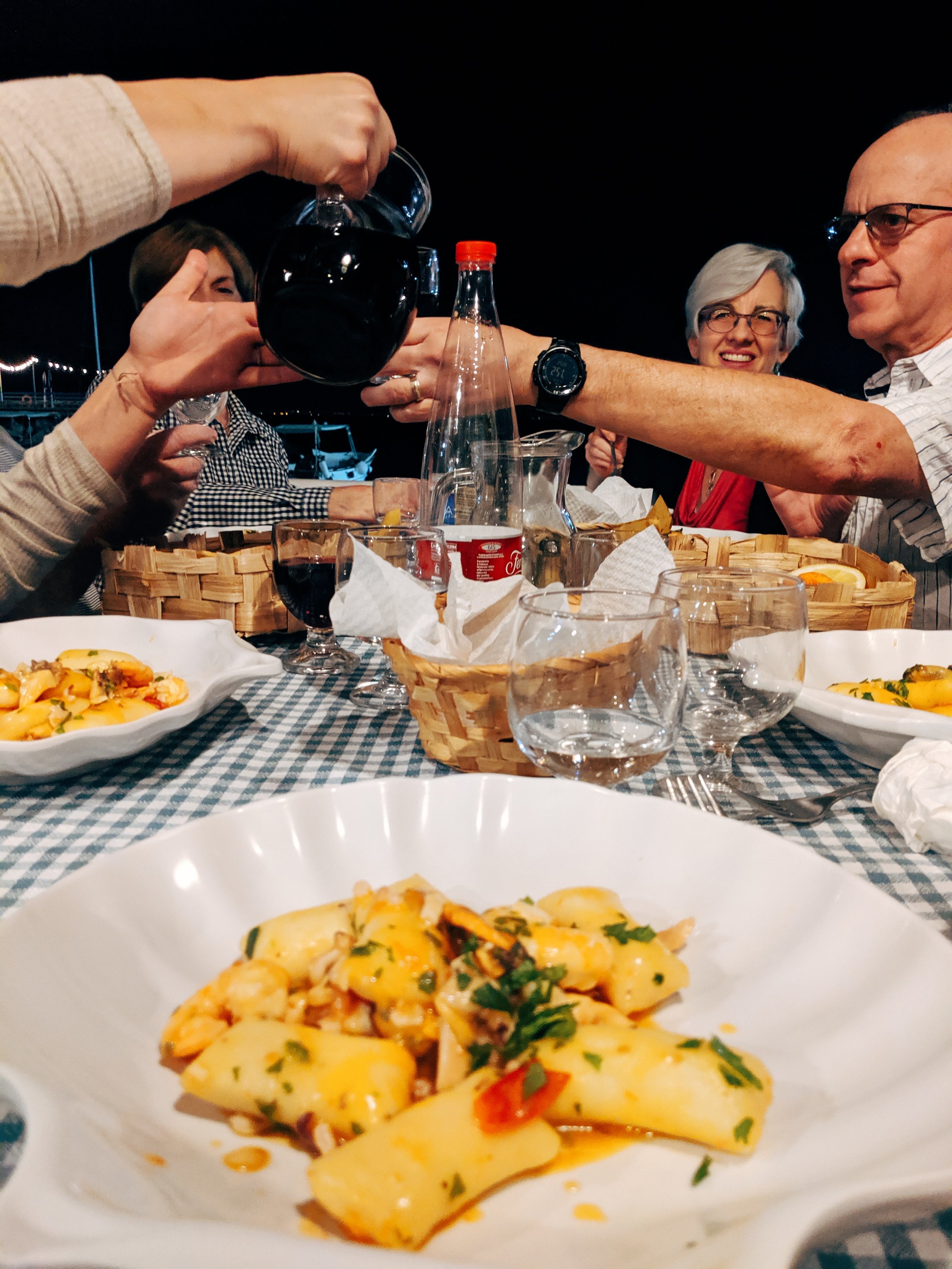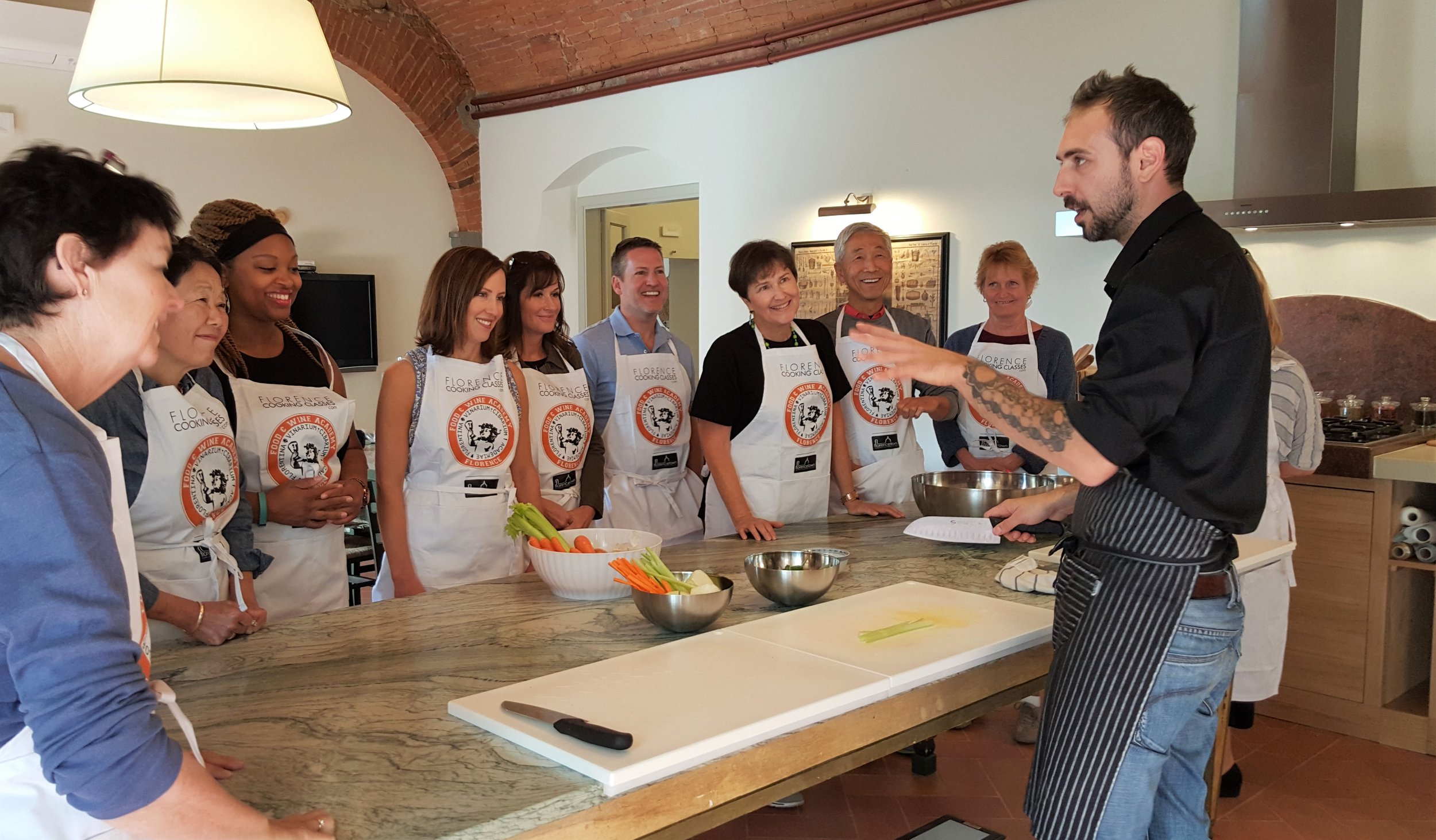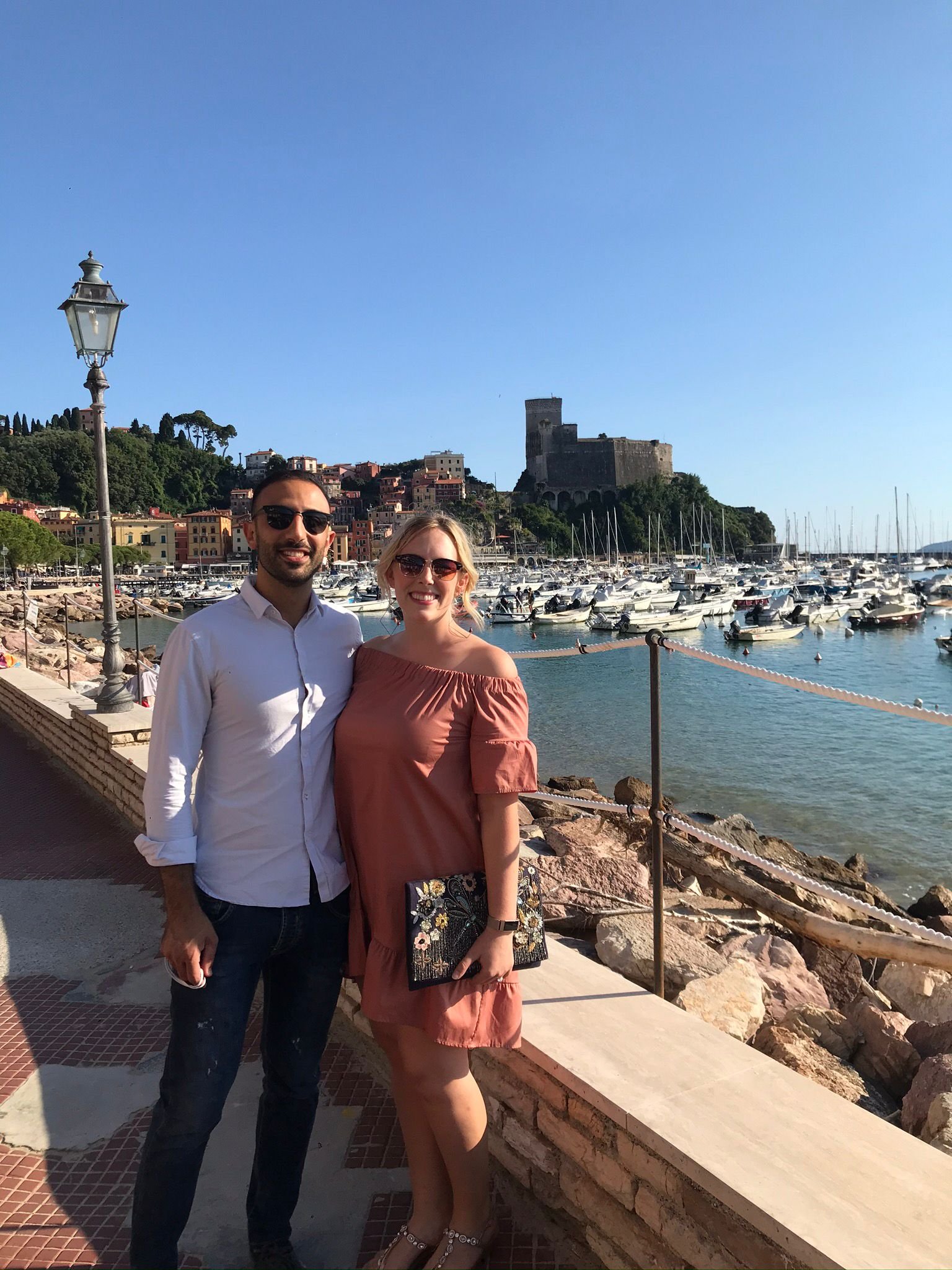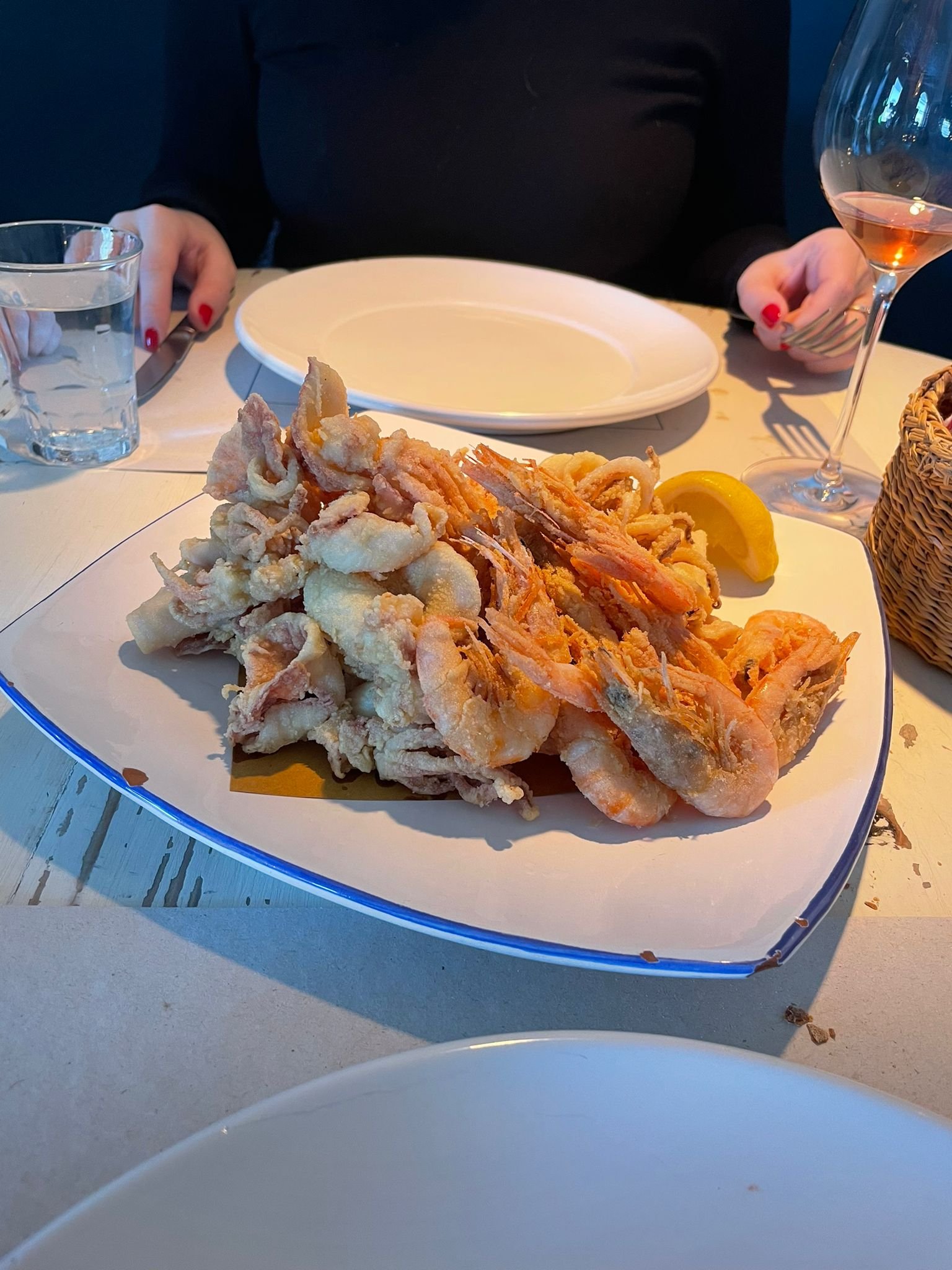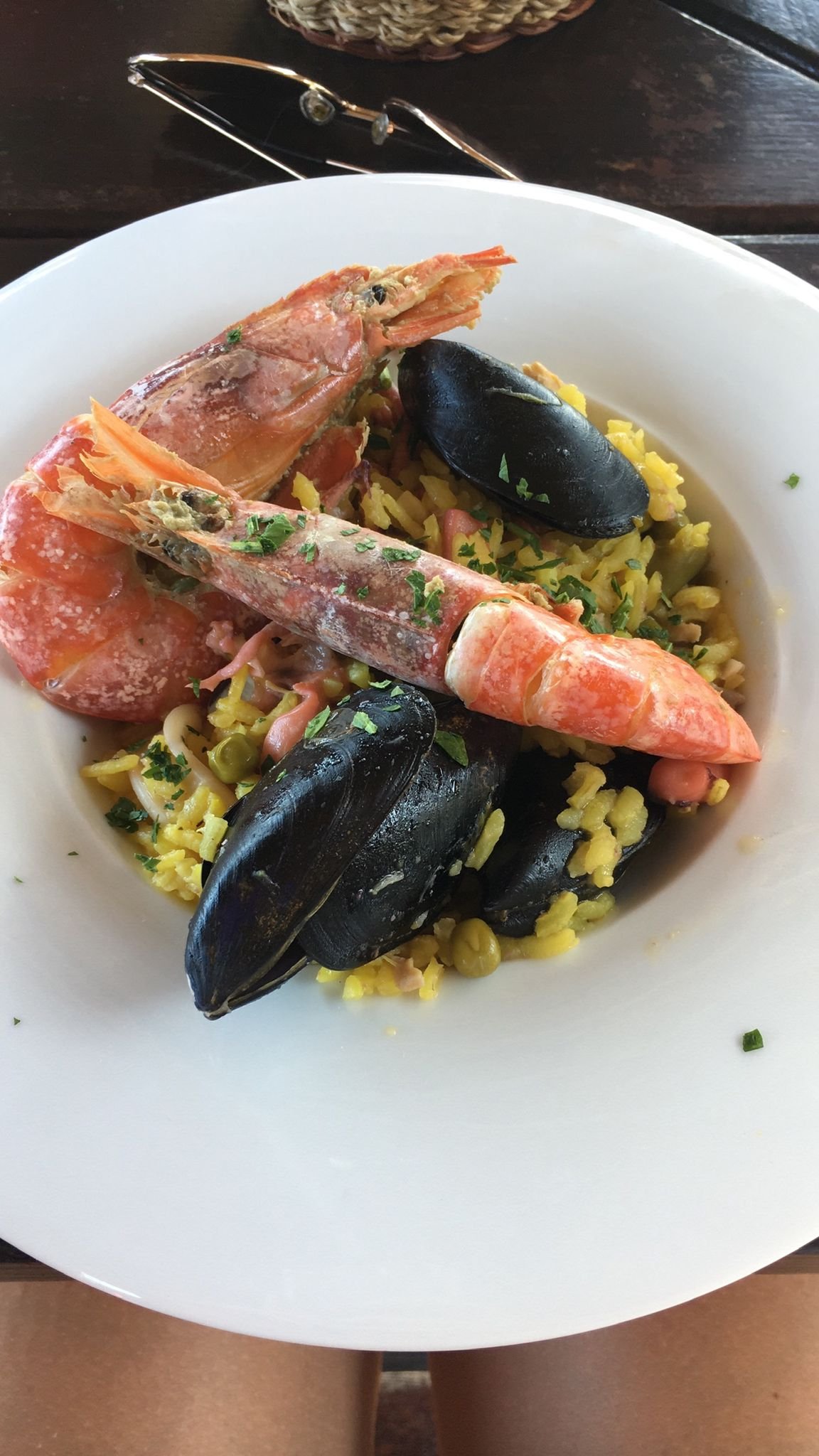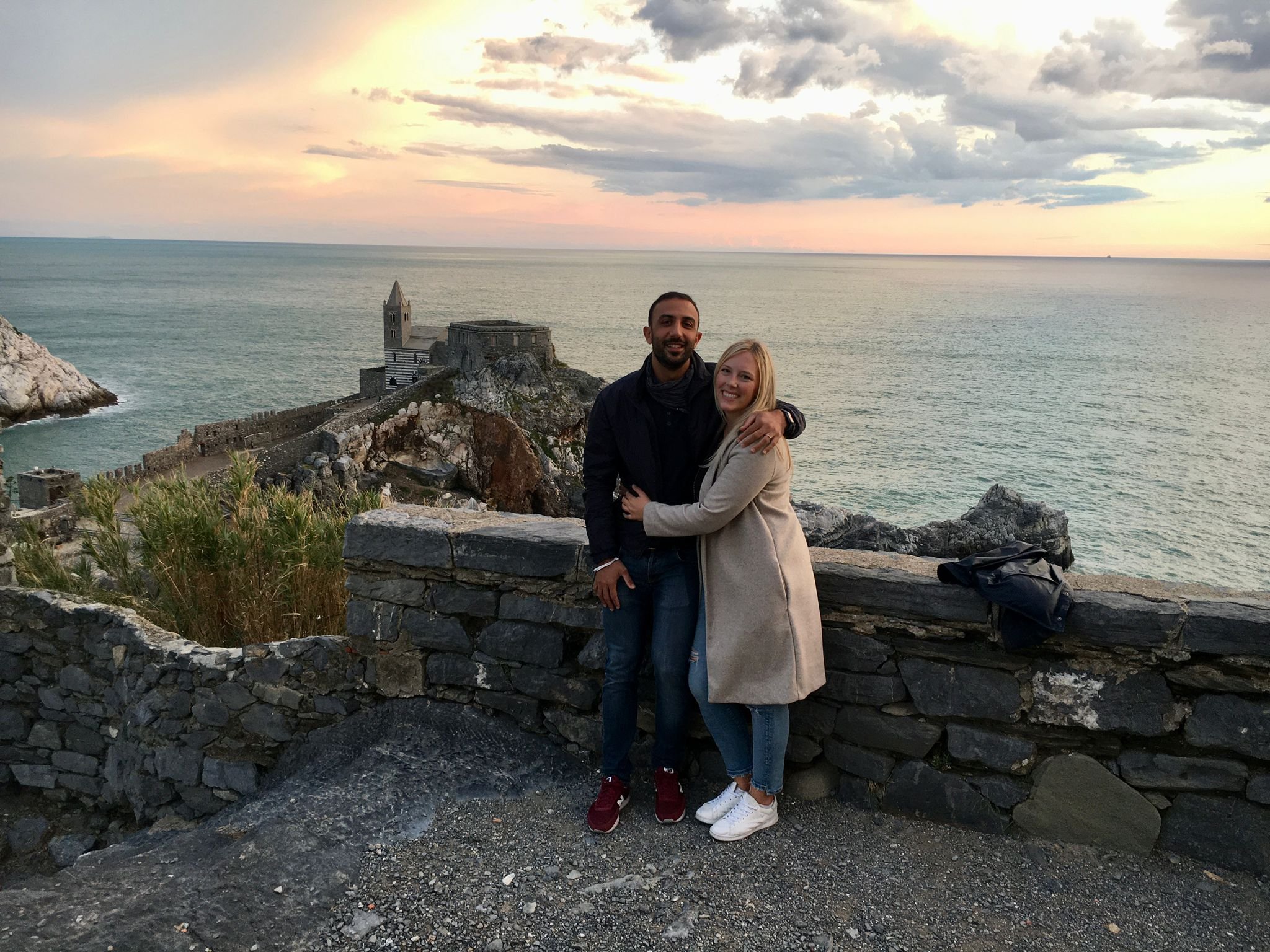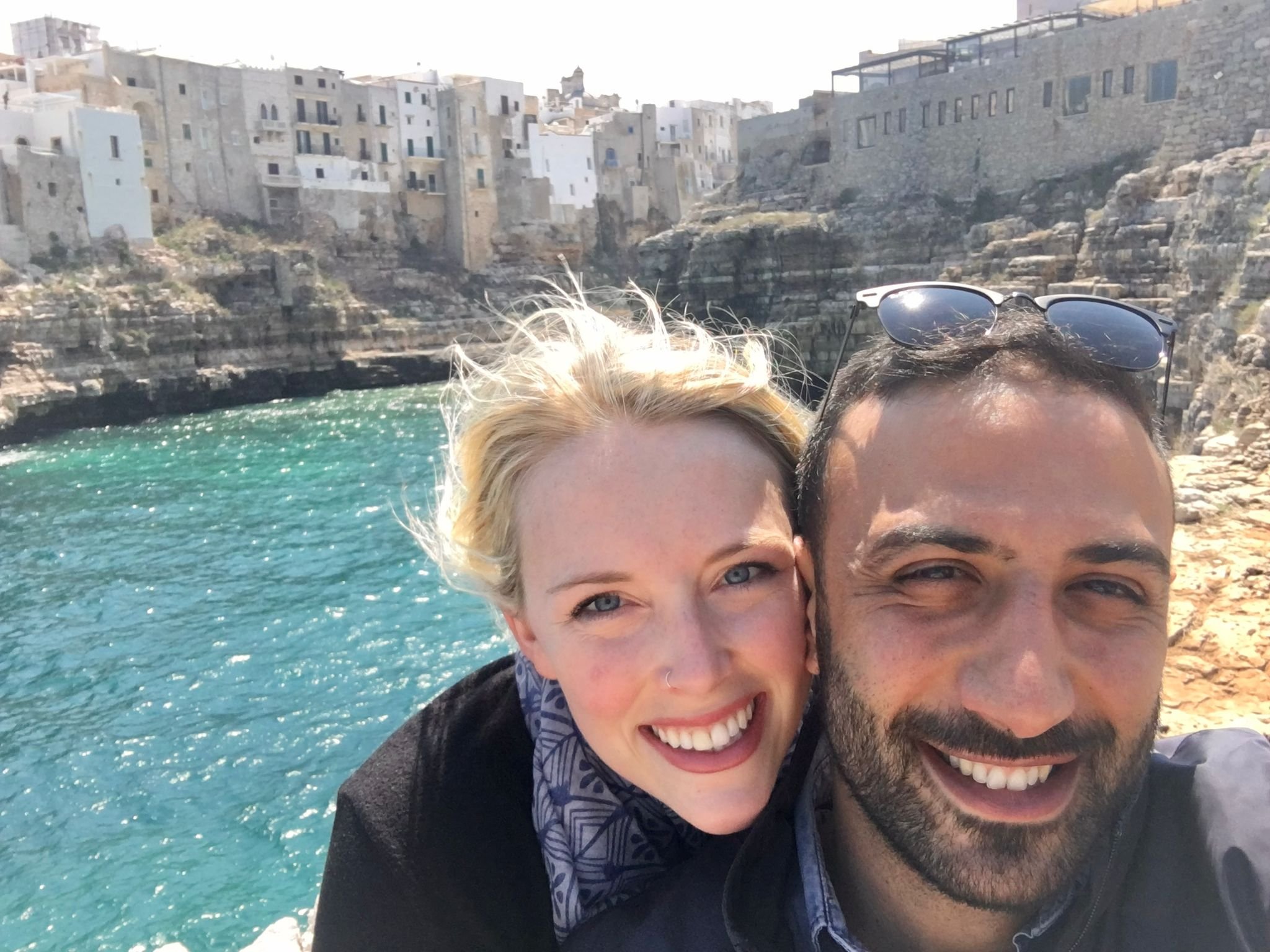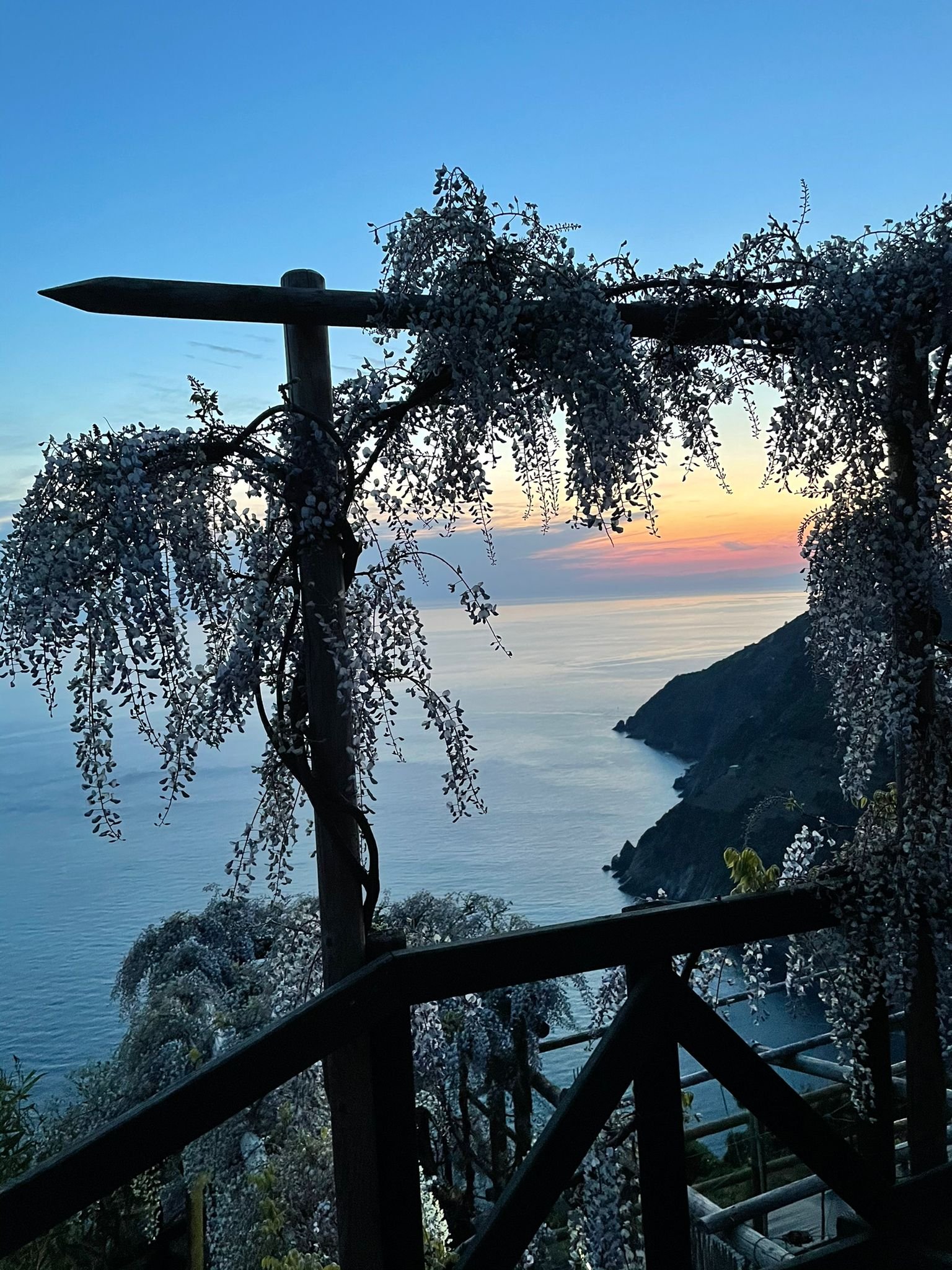An Unforgettable Lunch in Capri
/Told by Kathryn Bogley, Heart of Italy Tour Host for our culinary trips to Italy
There is something incredibly special and, dare I say, magical, about the Island of Capri. Many go for the shops, celebrity-spotting (or if you’re a celebrity, to be seen), the handmade sandals, the views, the blue grotto–but what makes Capri special to us, are our friends Domenico, Maria, and sharing lunch with three generations of their family.
To reach Domenico and Maria’s home, we wind our way up the mountain from the charming Marina Grandeto to the picturesque town of Capri, then on to our final destination of Anacapri. With each step, the world around us falls quieter and quieter.
Domenico guides us through the glamorous shop-lined streets of Capri before whisking us away on an intimate tour of the lush Augustus gardens. Amidst the flourishing greenery and overlooking the majestic cliffside, we find ourselves lost in the ethereal panorama of sparking turquoise waters and the famous Faraglioni rocks.
Our journey continues with a private drive up the hillside to Anacapri. Domenico leads us through the quaint streets of Anacapri and we end up on a residential street, where our presence draws gentle glances from the locals, intrigued by the rare sight of travelers venturing this far off the path.
We arrive at the gate to Domenico’s home which opens up to their beautiful patio and garden. Here, amidst the fragrant blooms and dappled sunlight, awaits a feast for both the senses and the heart.
As we arrive, we are embraced by the warmth of Domenico's wife, Maria, carrying their child on her hip, while her parents, extend their heartfelt welcome.
Together, we are ushered into their garden patio and begin sipping on cool, crisp white wine, a perfect respite after spending the day in the warm island sun. A delectable spread of fresh mozzarella, olive oil, and crostini is laid out on the table for us to snack on while Maria gracefully demonstrates how to make her cherished family lemon cake recipe. We enjoy our own live private cooking show while Domenico and their daughter look on to supervise! We feel right at home as we gather around Maria, asking questions to ensure we don’t miss a single step, all while soaking up the shade from the leafy canopy and lemon trees overhead.
To our surprise, Maria lets us in on a secret: the cake reaches its peak perfection after a day of rest. With mischievous glee, she reveals that she has already prepared one in advance, tucked away in the kitchen, ready for us to enjoy after lunch.
When you dine with an Italian family, you’ll quickly learn there’s never a moment when the food runs out. Seconds are always available and readily given despite half-hearted protest attempts.
Our lunch on the island of Capri with Domenico, Maria, and their family is no different.
Generous helpings of ravioli, manacone pie, and lemon cake are passed around their patio table until everyone has had their fill of the best Caprese comfort foods.
For lunch, Maria hand-made ravioli which is a recipe specific to Anacapri and their family. It’s arguably one of the best bites of the whole trip and it takes a lot of willpower
not to fill up on the ravioli alone while there are more delicious dishes to come. To be exact, manacone pie. A savory, meaty, carby dish that feels like the ultimate comfort food. In between bites, Domenic and Maria share stories about growing up and falling in love on the island.
Maria then brings out her famous lemon cake, delicately dusts it with powdered sugar on the table, and puts the final touch of fresh sliced lemons on top. You can smell the fresh citrus from the lemons mixing with the sweetness of the cake.
No matter how full you may be from lunch, a subtle longing stirs within as you realize that perhaps, just perhaps, there is still a hint of space reserved for a slice, perfectly complemented by a glass of crisp, white wine.
Even though you’ve only been on Capri a day, you get a true sense of the spirit of the place. Sure there are the glitzy polished shops and bejeweled handmade sandals, but the heart lies with our new friends and their generations of family welcoming us into their small island town.
Visit Domenico, Maria, and their family with us on our culinary trips to Italy!
Travel with us around the world on one of our multi-day small group food tours. Check out our itineraries to Italy, Japan, Peru, and more! Join us as we visit tea farms in Japan, sip on limoncello in Italy, and savor ceviche in Peru.
If you’re traveling abroad and don’t know where to start or want to tap into our travel expertise to make the most of your trip, check out our Travel Coaching and Private Trips with booking service.
No matter where you travel, we always recommend purchasing travel protection to safeguard against sudden changes or cancellations. If you don’t already have a preferred vendor, you can check out ours - Travel Insured - which offers a “Cancel for Any Reason” policy.


